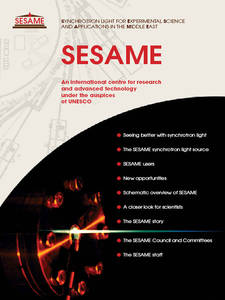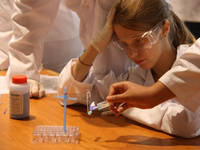SESAME
SESAME (Synchrotron-light for Experimental Science and Applications in the Middle East) is a third generation 2.5 GeV synchrotron-light source under construction in Allan (Jordan), modelled institutionally on CERN. SESAME is now a fully independent intergovernmental organisation, but UNESCO (which remains the depository of the Statutes) played a vital role in getting the project started, and has provided unfailing support thereafter. It was officially opened in 16 May 2017. SESAME aims at both:
- Enabling world-class research in its Members in subjects ranging from biology and medical sciences through materials science, physics and chemistry to archaeology, and
- Building scientific and cultural bridges between neighbouring countries, promoting mutual understanding and tolerance through international cooperation, and fostering a regional community of scientific users who will work together at SESAME.
The Members of SESAME are currently Cyprus, Egypt, Iran, Israel, Jordan, Pakistan, the Palestinian Authority and Turkey. The Observer countries are Brazil, China, France, Germany, Greece, Italy, Japan, Kuwait, Portugal, the Russian Federation, Spain, Sweden, Switzerland, the United Kingdom and the United States of America.
The SESAME synchrotron and 3 of its 7 Phase I beamlines are expected to be operational in 2017. These beamlines are the
- X-ray absorption fine structure/X-ray fluorescence spectroscopy beamline for basic materials science, as well as applications in materials and environmental science on the micrometre scale;
- Infrared spectromicroscopy beamline for molecular biology, environmental studies, materials, and archaeological sciences;
- Materials science beamline mainly for materials science; and
- Macro-molecular crystallography beamline for use in structural molecular biology.
UNESCO helps in fostering awareness and participation of its Member States and partners in the activity of SESAME, and in running and developing a training programme designed to set up, in the Middle East and neighbouring countries, a community of users of synchrotron radiation in many areas of basic and applied research in science and technology.


